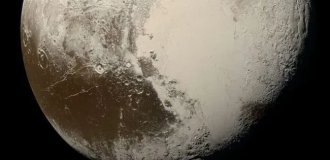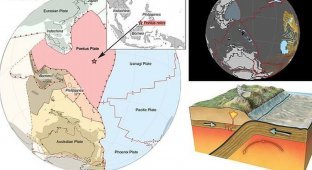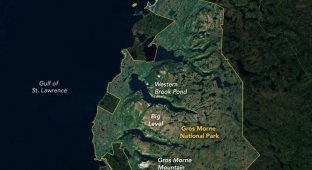Scientists have put forward a new theory of the formation of the earth's continents (5 photos)
The findings could represent new insights into how potentially habitable Earth-like planets evolve. 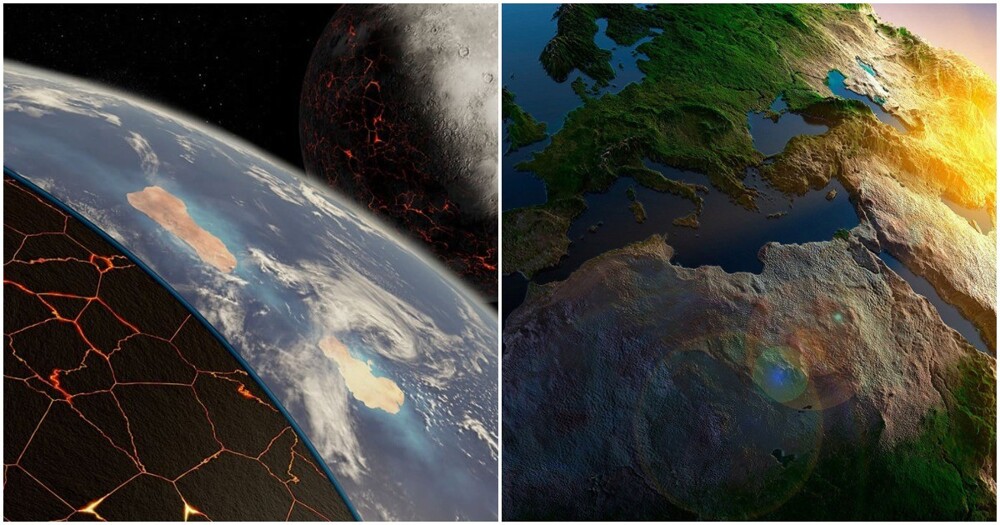
Scientists from the University of Pennsylvania have described a possible mechanism for the formation of cratons - ancient and vast areas of continental crust. Cratons extend more than 150 kilometers, from the Earth's surface to the upper mantle, where they act like the keel of a boat, keeping continents afloat at or near sea level over geological time.
A new mechanism proposed by scientists may explain how cratons formed about 3 billion years ago. Cratons are thought to have formed between 3 and 2.5 billion years ago, a time when radioactive elements such as uranium decayed at about twice the rate and produced twice as much heat as they do today. 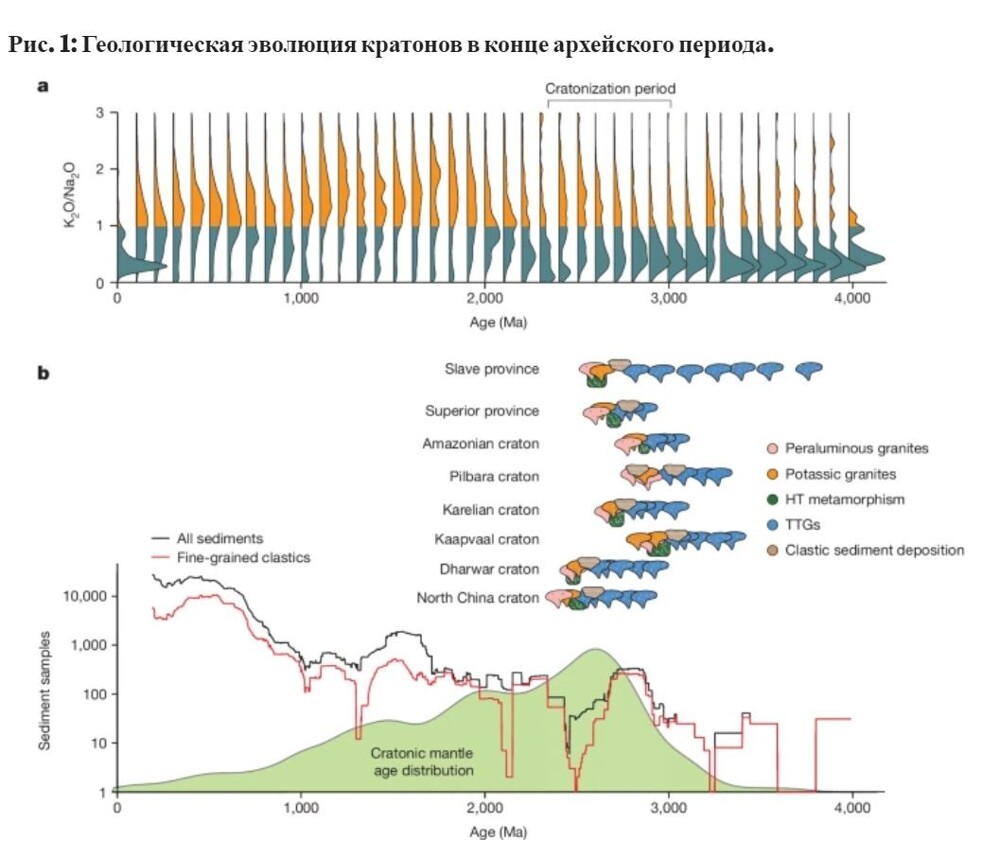
According to the new theory, the continents did not emerge from the planet's oceans as stable land masses. It is more likely that the action of rain and wind on fresh rock about 3 billion years ago set in motion a series of geological processes that created a stable crust.
"To create a planet like Earth, you need to create continental crust, and you need to stabilize that crust," said Jesse Reimink, assistant professor of geosciences at the University of Pennsylvania and author of the study. "Scientists were thinking the same thing - the continents became stable and then rose above sea level. But we say these processes did not happen simultaneously."
As a result of weathering, fuel-releasing elements were concentrated in the shallow crust: uranium, thorium, potassium. This allowed the deeper crust to cool and harden. This created a thick, hard layer that protected the bottoms of the continents from deformation. 
"The recipe for the formation and stabilization of continental crust involves the concentration of these fuel-producing elements, which can be thought of as small heat engines located very close to the surface," said Andrew Smaie, an associate professor of geosciences at the University of Pennsylvania and an author of the study. "You have to take this into account because every time an atom of uranium, thorium or potassium decays, it releases heat, which can raise the temperature of the Earth's crust. Hot crust is unstable - it is susceptible to deformation and does not stay in place."
As wind, rain and chemical reactions eroded rocks on ancient continents, sediments and clay minerals washed into streams and rivers and ended up in the sea. There they formed sedimentary deposits, such as shales, which contained large amounts of uranium, thorium and potassium.
Collisions of tectonic plates buried these sedimentary rocks deep within the earth's crust. There, under the influence of radiogenic heat generated by the shales, the lower part of the earth's crust melted. The melts rose back to the upper crust, trapping heat-producing elements in rocks such as granite. This allowed the lower part of the earth's crust to cool and harden. 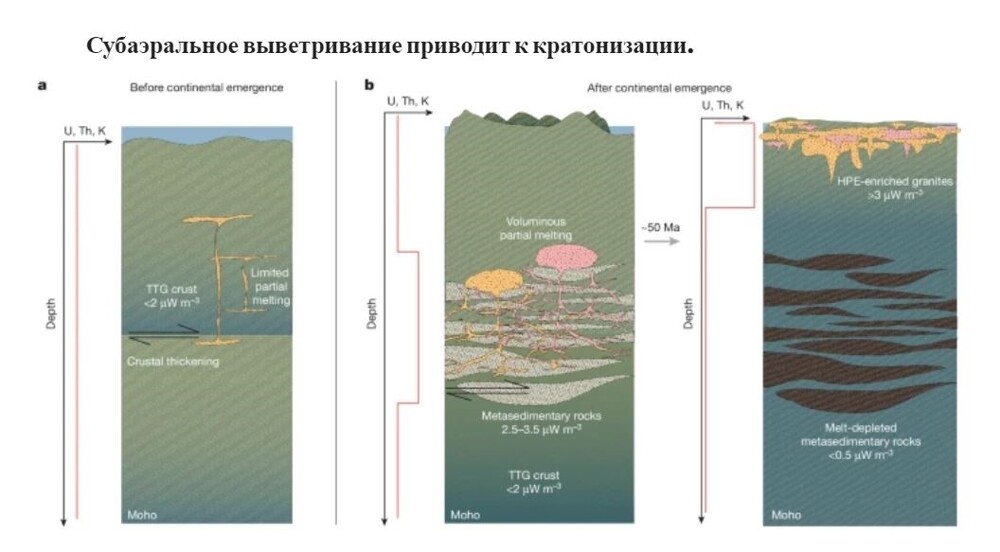
Schematic illustration of key geodynamic processes in craton stabilization.
"We can look at this as a question of planetary evolution," Reimink said. "One of the key components needed to create a planet like Earth might be the appearance of continents relatively early in its existence. Because you're going to create radioactive deposits that are very hot and that create a really stable piece of continental crust that sits right at the level of sea and is an excellent environment for the reproduction of life."
The researchers analyzed the concentrations of uranium, thorium and potassium in hundreds of rock samples from the Archean period when cratons formed to estimate radiogenic heat output based on the actual composition of the rocks. They used these values to create thermal models of craton formation.
"Our research links heat generation in rocks to the formation of continents, sedimentation and differentiation of continental crust," Smaie said. 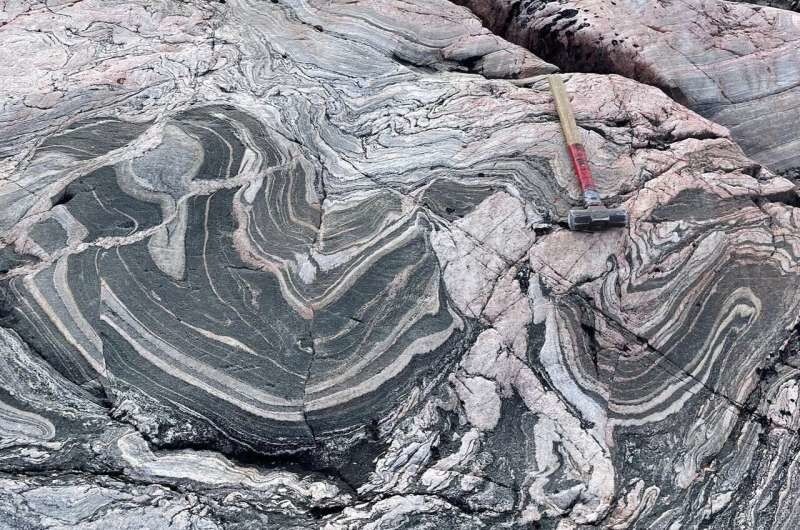
These ancient metamorphic rocks, found on the Arctic coast, represent the "roots" of the continents that are now exposed on the surface.
Cratons, found within continents, contain some of the oldest rocks on Earth. In tectonically active areas, the formation of mountain belts brings deeply buried rocks to the surface. But the origins of the cratons remain inaccessible. Scientists said that in the future they will sample the ancient subsurface of cratons and possibly drill cores to test their model.
"These metamorphosed sedimentary rocks that melted and formed granites that concentrated uranium and thorium are like black box flight recorders that record pressure and temperature," Smaie said. "And if we can open this archive, we can test our model's predictions about the trajectory of continental crust."
The full study can be found in the journal Nature, in the article Subaerial weathering drove stabilization of continents.







